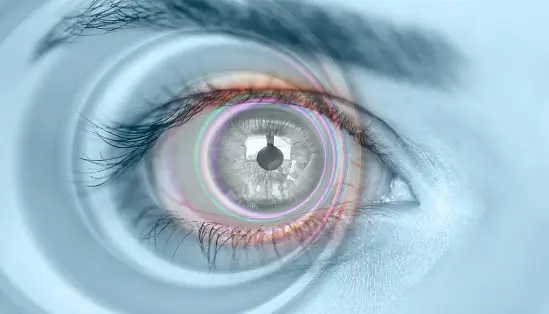The Magic of Illusions and Perspectives in Photography

Photography is an art form that captures the essence of moments, freezes time, and tells stories through the lens. However, beyond merely documenting reality, photography has the power to create illusions and manipulate perspectives, enchanting viewers with images that challenge perception and ignite the imagination. The magic of illusions and perspectives in photography lies in the photographer’s ability to use techniques and creative approaches to transform ordinary scenes into extraordinary visual experiences.
The Science Behind Visual Perception
How We See the World
Our perception of the world is a complex process involving our eyes and brain working in tandem. Light enters the eye, is focused onto the retina, and is then converted into electrical signals sent to the brain. The brain processes these signals to construct a coherent image of the environment. However, this process is not infallible and can be influenced by various factors, leading to visual illusions.
Understanding Optical Illusions
Optical illusions occur when our visual perception differs from reality. They exploit the brain’s tendency to make assumptions and fill in gaps based on past experiences and context. In photography, these illusions can be deliberately crafted to play with viewers’ minds, creating images that intrigue and perplex.
Techniques for Creating Illusions in Photography
Forced Perspective
Forced perspective is a technique that manipulates the human visual perception by using the scaling of objects to create a sense of illusion. It involves positioning subjects and objects at specific distances and angles to make them appear larger, smaller, closer, or farther away than they actually are. This technique is often used in tourist photography, where people seem to hold up the Leaning Tower of Pisa or pinch the top of the Eiffel Tower.
Example: Leaning Tower of Pisa
One of the most famous examples of forced perspective is the classic photograph of tourists “holding up” the Leaning Tower of Pisa. By carefully positioning their hands and adjusting the angle of the shot, photographers create the illusion that the tower is being supported by the person in the foreground, while in reality, the tower is several meters behind.
Reflection and Mirror Photography
Using reflections and mirrors in photography can create stunning illusions that play with symmetry, depth, and reality. Reflections in water, glass, or mirrors can add a surreal quality to images, making viewers question what is real and what is an illusion.
Example: Urban Reflections
Photographers often use puddles or glass surfaces in urban environments to capture reflections of buildings, creating a double image that adds depth and complexity to the composition. This technique can transform mundane cityscapes into captivating works of art.
Long Exposure Photography
Long exposure photography involves using a slow shutter speed to capture movement over time, resulting in images with a dreamy, ethereal quality. This technique can create illusions of motion and light trails, making static objects appear dynamic and fluid.
Example: Light Painting
In light painting, photographers use a light source to “paint” in the frame during a long exposure shot. The resulting images feature streaks of light that appear to float and dance in the air, creating an illusion of magical energy and motion.
Perspectives in Photography
The Power of Angles
The angle from which a photograph is taken can dramatically alter the viewer’s perception of the subject. High angles can make subjects appear smaller and more vulnerable, while low angles can make them appear larger and more imposing. By experimenting with different angles, photographers can convey a range of emotions and narratives.
Example: Worm’s Eye View
A worm’s eye view is a photograph taken from a very low angle, looking up at the subject. This perspective can make even the most ordinary objects seem monumental and awe-inspiring. For instance, a photograph of a flower taken from ground level can emphasize its grandeur and beauty, transforming it into a towering presence.
Depth of Field
Depth of field refers to the range of distance within a photo that appears acceptably sharp. By manipulating depth of field, photographers can control what parts of the image are in focus and which are blurred, guiding the viewer’s attention and creating a sense of depth and dimension.
Example: Portrait Photography
In portrait photography, a shallow depth of field is often used to keep the subject’s face in sharp focus while blurring the background. This technique isolates the subject, making them stand out and adding a three-dimensional quality to the image.
Perspective Distortion
Perspective distortion occurs when the camera is positioned very close to or far from the subject. This technique can be used creatively to exaggerate certain features or create a sense of vastness and scale.
Example: Architectural Photography
In architectural photography, using a wide-angle lens close to a building can create an illusion of towering height and grandeur. Conversely, shooting from a great distance with a telephoto lens can compress space, making buildings appear closer together and more imposing.
Creative Uses of Illusions and Perspectives
Storytelling Through Photography
By skillfully employing illusions and perspectives, photographers can tell compelling stories that engage and captivate viewers. These techniques can evoke emotions, provoke thought, and invite viewers to see the world in new and unexpected ways.
Example: Conceptual Photography
Conceptual photography uses visual symbols and metaphors to convey deeper meanings and narratives. For instance, a photograph of a person holding an umbrella under a downpour of lightbulbs can symbolize the idea of being showered with ideas and inspiration. The creative use of perspective and illusion enhances the storytelling aspect of the image.
The Art of Surrealism
Surrealist photography blends reality and imagination, creating fantastical scenes that challenge our understanding of the world. By manipulating perspectives and incorporating illusions, surrealist photographers craft dreamlike images that transport viewers to otherworldly realms.
Example: Levitation Photography
Levitation photography is a surrealist technique where subjects appear to be floating or defying gravity. This effect is achieved through careful planning, props, and sometimes post-processing. The resulting images are magical and otherworldly, captivating viewers with their impossible beauty.
Conclusion
The magic of illusions and perspectives in photography lies in their ability to transform the mundane into the extraordinary, to turn reality into a canvas for imagination. By understanding and mastering these techniques, photographers can create images that not only capture moments but also evoke emotions, tell stories, and challenge perceptions. Whether through forced perspective, reflections, long exposures, or creative angles, the power of photography to enchant and amaze remains boundless.



